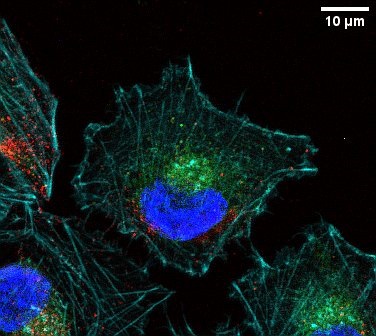Discovery of 10-Billion-Year-Old Radio Halo Challenges Cosmic Theories

Astronomers have announced a groundbreaking discovery involving a radio halo located approximately 10 billion light-years from Earth. This finding, which was published on June 28, 2025, in The Astrophysical Journal Letters, reveals that galaxy clusters in the early universe were already filled with high-energy particles, suggesting that ancient black hole activity or cosmic particle collisions significantly influenced their formation and evolution.
The research team, co-led by Dr. Julie Hlavacek-Larrondo, an astrophysicist at Université de Montréal, and Dr. Roland Timmerman from the Institute for Computational Cosmology at Durham University, utilized data from the Low Frequency Array (LOFAR) radio telescope. They focused on a galaxy cluster known as SpARCS1049, where they detected a diffuse radio signal that emanated not from individual galaxies but from a vast region teeming with energetic particles and magnetic fields. This mini halo, stretching over a million light-years, marks the most distant radio halo ever observed, essentially doubling the previous record held by astronomers.
According to Dr. Hlavacek-Larrondo, "It's as if we've discovered a vast cosmic ocean, where entire galaxy clusters are constantly immersed in high-energy particles." Dr. Timmerman added, "This astonishing detection of such a strong radio signal at this distance indicates that these energetic particles and the processes creating them have been influencing galaxy clusters for nearly the entire history of the universe."
The implications of this discovery are profound. It indicates that even in the nascent stages of the universe, galaxy clusters were shaped by energetic processes far earlier than previously recognized. The research suggests two primary mechanisms for the formation of this mini halo: the activity of supermassive black holes ejecting streams of high-energy particles and the collisions of charged particles within the hot plasma of the galaxy cluster itself. The latter process occurs when particles collide at near-light speeds, resulting in the formation of highly energetic particles that can be observed from Earth.
The research findings provide a rare glimpse into the state of galaxy clusters shortly after their formation, indicating that they have been enriched with high-energy particles for billions of years longer than previously understood. This insight allows astronomers to probe deeper into the origins of these energetic particles and their impact on galaxy cluster evolution.
With advancements in telescope technology, particularly the upcoming Square Kilometer Array (SKA), scientists anticipate the ability to detect even fainter signals in the universe. Such tools will enable further exploration of the role of magnetic fields, cosmic rays, and energetic processes in shaping the cosmos. Dr. Hlavacek-Larrondo remarked, "We are just scratching the surface of how energetic the early Universe really was. This discovery gives us a new window into how galaxy clusters grow and evolve, driven by both black holes and high-energy particle physics."
This breakthrough not only rewrites aspects of cosmic history but also sets the stage for future studies that will expand our understanding of galaxy formation and the dynamics of high-energy astrophysical phenomena. As researchers continue to investigate these mini halos, the pursuit of knowledge about the universe remains an ever-evolving journey, with each discovery leading to new questions and insights about our cosmic origins.
Advertisement
Tags
Advertisement





